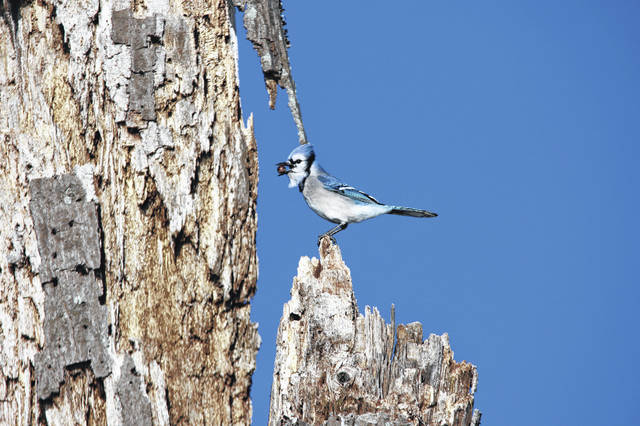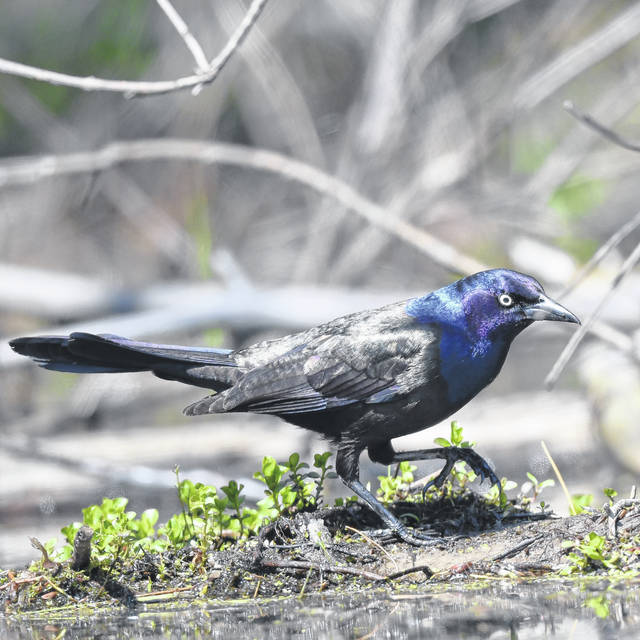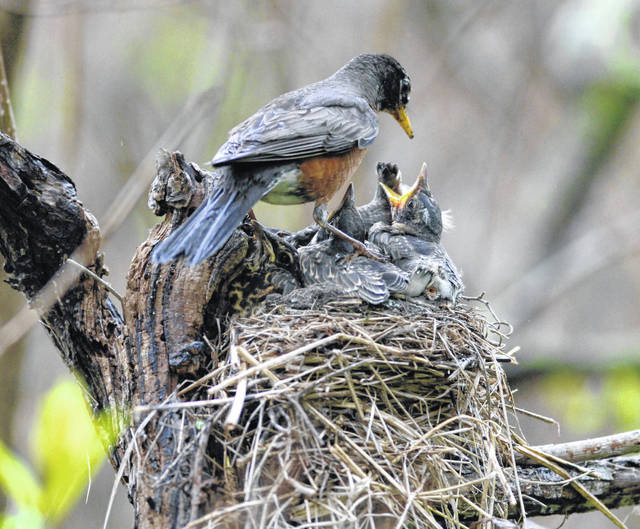


LIMA — After more than a year of COVID-induced stress that has been felt by the entire world, it’s finally time to go outside again. Some people might relieve that stress by taking some time to enjoy the beauty of the outdoors — the trees, the lakes, the wildlife. While Americans find time to relax through nature walks and beach days, they might be unaware of another pandemic going on around them.
Earlier this summer, reports began swirling about certain types of birds getting sick and dying of an unknown illness. The first reports came out of the Washington, D.C., area. Not long after, similar situations were reported in nearby states. Whatever the sickness is, it has already spread to Delaware, Indiana, New Jersey, Ohio and Pennsylvania,.
The United States Geological Survey has been examining birds that it found, and several illnesses have been ruled out as a possibility. Ohio Department of Natural Resources Division of Wildlife spokesman Brian Plasters explained how the USGS approached the situation.
“They’re testing for all these diseases or past diseases, and they can say it’s not salmonella, it’s not West Nile virus,” he said. “(It’s) microbiology all the way down to the microbes, so they’re slowly ruling things out.”
The most commonly impacted species are common grackles, blue jays, European starlings and American robins. Although the mystery illness has been found in adult birds, it has most commonly been found in fledglings — baby birds that have left the nest but are still reliant on their parents.
Fledglings are still growing into their wings and bodies, which could make it harder to spot the difference between a healthy and a sick bird because they are clumsier and have a slightly different look from the adults. There are still symptoms that sick fledglings can be identified by.
“The eyes will become swollen. There might be a white crusty sort of covering on the eyes. They might lose some feathers around the eyes,” said Beth Theisen, a naturalist at Johnny Appleseed Metropolitan Park District in Lima. “It also seems to be working neurologically, so the birds will exhibit head tremors or dizziness, or they’ll be lethargic. They wouldn’t act the way they should.”
While experts continue to try to crack the code on what is making these birds sick, there are things that members of the community can do to stop the disease from spreading.
ODNR has recommended that all Ohioans take down and clean their bird feeders and remove their birdbaths. Some states have also advised residents to take down their hummingbird feeders, but ODNR has not made that recommendation to Ohioans.
“They don’t know if it’s being transmitted from close contact between birds, so at a bird feeder, you get lots of birds coming together in a close environment,” Theisen said. “So by taking the bird feeders down, it’s encouraging social distancing.”
Theisen also said people should not worry about birds going hungry without feeders, as there is plenty of natural food for them to eat during the summer months.
ODNR also encouraged residents to do what they can to protect poultry and pets. They still don’t know if the disease can be transmitted across species.
Anyone who finds an ill or deceased bird can report it by calling their nearest ODNR wildlife rehabilitator via j.mp/3B5qxCV or by filing an online report on the ODNR website via j.mp/3knp7h6. Residents should only remove a dead bird themselves if they have no other options. It’s highly recommended to wear gloves during disposal and wash hands afterwards.
The birds are facing a situation that people have become all too familiar with in the past year, but that does not mean that a solution won’t be coming. Plasters has been encouraged by what he has heard from the USGS.
“I was on a call with (the USGS) about two weeks ago. There’s some very smart people working on it,” he said. “They are definitely putting a lot of resources into figuring things out, so that’s great.”
Birds have suffered from pandemics the same as the human race, so it is now just a matter of figuring out how to keep it from spreading and eventually ending it for good.
It took some time for people to bounce back after the pandemic, but the worst of it has ended. Just as many people have finally returned to their favorite bars and restaurants, the birds will come back to their favorite baths and feeders. It just might take a little time.




